More
Prospectus: Sports Turf Managers Association

COMPLETE MONOGRAPH: 2024 GROUP A PROPOSED CHANGES TO THE I-CODES
Play is the making of civilization—how one plays the game
more to the point than whether the game is won or lost.
The purpose of this standard is to establish the minimum requirements to safeguard health, safety and general welfare through structural strength, means of egress facilities, stability and safety to life and property relative to the construction, alteration, repair, operation and maintenance of new and existing temporary and permanent bench bleacher, folding and telescopic seating and grandstands. This standard is intended for adoption by government agencies and organizations setting model codes to achieve uniformity in technical design criteria in building codes and other regulations.
FREE ACCESS: Standard on Bleachers, Folding and Telescopic Seating, and Grandstands
We are tracking the changes in the transcripts linked below:
ICC 300-2020 edition Public Input Agenda – January 2022
ICC 300-2017 edition Public Comment Draft – October 2017
Consensus Committee on Bleacher Safety (IS-BLE)
This title is on the standing agenda of our Sport, Olahraga (Indonesian), رياضة (Arabic), colloquia. You are welcomed to join us any day at with the login credentials at the upper right of our home page.
2024/2025/2026 ICC CODE DEVELOPMENT SCHEDULE
Virtual reality technology in evacuation simulation of sport stadiums
Code of Practice for Emergency Sound Systems at Sports Venues

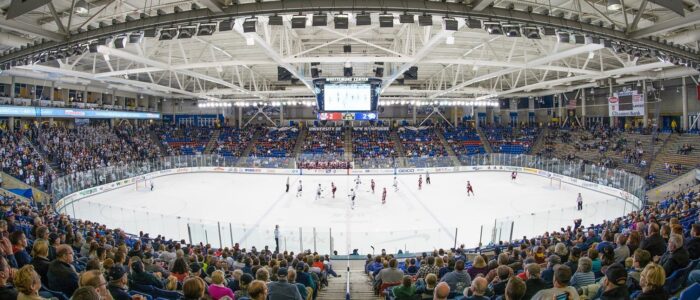
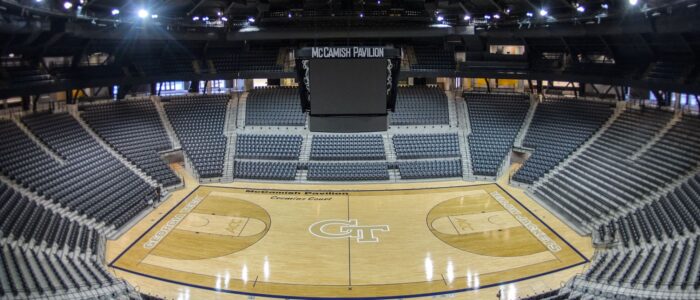
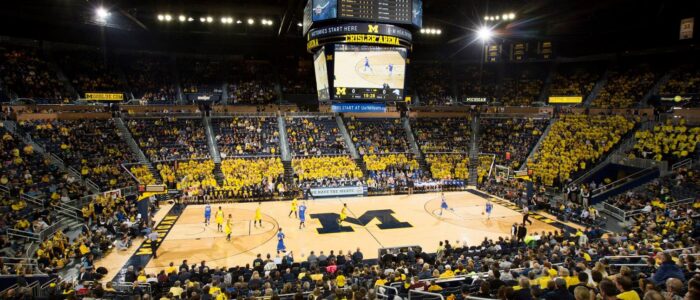
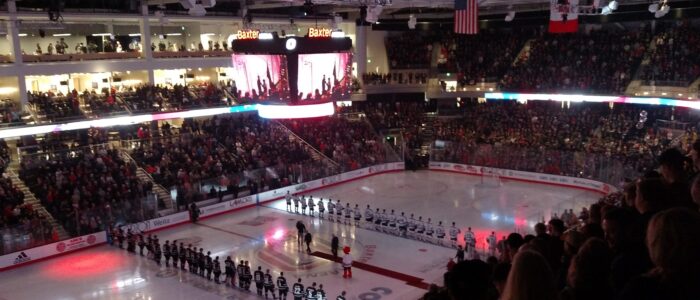
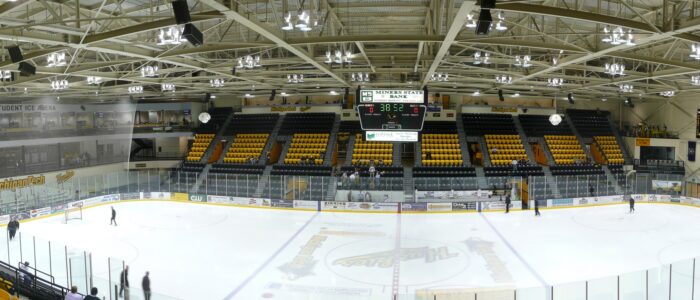

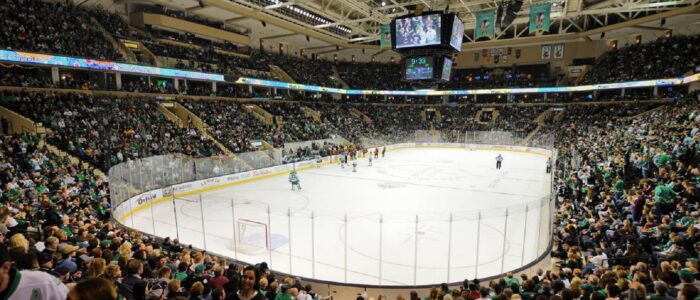
Posted December 6, 2019
At the April International Code Council Group A Hearings there were three candidate code changes related to the safety standard of care for athletic venues:
E104-18 (§ 1017 regarding exit travel distances) | PDF Page 218 of the Complete Monograph
F9-18 (§ 304 regarding spaces under bleachers) | PDF Page 1021 of the Complete Monograph
F135-18 (§ 907 regarding communication systems for open air bleachers) | PDF Page 1296 of the Complete Monograph
These concepts will likely be coordinated with another ICC regulatory product — ICC 300 – Standard on Bleachers, Folding and Telescopic Seating, and Grandstands — covered here previously. ICC 300 is a separate document but some of the safety concepts track through both.
The ICC Public Comment Hearings on Group A comments in Richmond Virginia ended a few days ago (CLICK HERE). The balloting is being processed by the appropriate committee and will be released soon. For the moment, we are happy to walk through the proposed changes – that will become part of the 2021 International Building Code — any day at 11 AM Eastern time. We will walk through all athletic and recreation enterprise codes and standards on Friday, November 2nd, 11 AM Eastern time. For access to either teleconference, click on the LIVE Link at the upper right corner of our home page.
Category: Athletics & Recreation, Architectural, Public Safety
Contact: Mike Anthony, Richard Robben, Jack Janveja
LEARN MORE:
Posted October 19, 2017
The International Code Council has launched a new revision cycle for its consensus document — ICC 300 – Standard on Bleachers, Folding and Telescopic Seating, and Grandstands. The purpose of the effort is the development of appropriate, reasonable, and enforceable model health and safety provisions for new and existing installations of all types of bleachers and bleacher-type seating, including fixed and folding bleachers for indoor, outdoor, temporary, and permanent installations. Such provisions would serve as a model for adoption and use by enforcement agencies at all levels of government in the interest of national uniformity.
Comments are due December 4th. The document is free. You may obtain an electronic copy from: https://www.iccsafe.org/codes-techsupport/standards/is-ble/. Comments may be sent to Edward Wirtschoreck, (888) 422-7233, ewirtschoreck@iccsafe with copy to psa@ansi.org)
* With some authority, we can claim that without Standards Michigan, many education industry trade associations would not be as involved in asserting the interest of facility managers in global consensus standards development processes. See ABOUT.
This facility is a key hub for UIL (University Interscholastic League) tennis in the Dallas-Fort Worth area,
GMC Varsity WIN 5-0 today against the Princeton Vikings! Great job ladies! #GoHawks @EAST_HAWKS Sycamore tomorrow AWAY! BRING IT, LADIES!!! pic.twitter.com/kEVXsFDzKM
— Lakota East Girls Tennis (@LEHSGirlsTennis) September 9, 2021
𝔸𝕋𝕃𝔸ℕ𝕋𝔸 𝕆ℙ𝔼ℕ
Andres Martin receives a wild card into the 2023 @ATLOpenTennis open for College Night! #TogetherWeSwarm | #AtlantaOpen
🔗: https://t.co/ZdwaQDfF0i pic.twitter.com/FkVVO4cAsV
— Georgia Tech Men’s Tennis (@GT_MTEN) June 27, 2023
Complete Monograph International Building Code
Note the following proposed changes in the transcript above: E59-24, F62-24, Section 323
Modular classrooms, often used as temporary or semi-permanent solutions for additional educational space, have specific requirements in various aspects to ensure they are safe, functional, and comfortable for occupants. Today we will examine best practice literature for structural, architectural, fire safety, electrical, HVAC, and lighting requirements. Use the login credentials at the upper right of our home page.
Structural Requirements
Architectural Requirements
Fire Safety Requirements
Electrical Requirements
HVAC (Heating, Ventilation, and Air Conditioning) Requirements
Lighting Requirements
By adhering to these requirements, modular classrooms can provide safe, functional, and comfortable educational spaces that meet the needs of students and staff while complying with local regulations and standards.
Related:
“No work of art can be great,
if it is not composed of the smallest things.”
— Vitruvius (Book VII, Chapter 9)
Today during our usual hour we sweep through standards action in building glazing, entrances and means of egress. The word fenestration (Latin: fenestra) has become a term of art for the design, construction, and placement of openings in a building, including windows, doors, skylights, and other glazed elements. While the word has sparse use in the International Code Council and National Fire Protection Association catalog it is widely used by the Construction Specifications Institute in its MasterFormat system for organizing construction standards, guidelines and building contracts.
The percentage of a building envelope “skin” that is comprised of doors and windows varies depending on the specific building design, function, and location. However, a commonly cited range is between 15% to 25% of the total building envelope. The actual percentage will depend on several factors such as the building’s purpose, orientation, local climate, and energy performance goals. Buildings that require more natural light or ventilation, such as schools, hospitals, and offices, may have a higher percentage of windows and doors in their envelope. In contrast, buildings with lower lighting and ventilation requirements, such as warehouses, may have a smaller percentage of windows and doors.
Fenestration presents elevated risk to facility managers. The education facility industry is a large target and a pattern of settling out of court. For example:
These cases illustrate that colleges and universities can face legal action related to doors and windows, either due to alleged negligence in maintaining or repairing them, or due to issues related to student housing and accommodations.
Our inquiry breaks down into two modules at the moment:
Exterior facing fenestration
Interior window walls and doors
Join us online at the usual time.
Related:
— Ramin Nasibov (@RaminNasibov) May 25, 2024
The latest version of the ICC/MBI Standard 1200 is the 2020 edition, specifically the ICC/MBI 1200-2020: Standard for Off-Site Construction: Planning, Design, Fabrication and Assembly. This standard, developed by the International Code Council (ICC) in collaboration with the Modular Building Institute (MBI), addresses the planning, design, fabrication, and assembly of off-site construction projects. It is part of a series of standards aimed at ensuring safety and compliance in off-site construction processes.
More
NOAA National Weather Service: Storm Total Maps and Verification
ASCE Codes & Standards Catalog
Engineers Joint Contract Documents Committee
Code and Standards Open for Comment
Public Comment for ASCE/EWRI 78-XX Guidelines for the Physical Security of Water and Wastewater/Stormwater Utilities (Comment Deadline 12/18/2023)
America’s Infrastructure Score: C-
Lorem ipsum
US Offsite partnered with RSA to design, manufacture, and deliver five new modular buildings that met California’s snow-load standards and doubled classroom capacity — all in under 10 months.
Beer was discovered accidentally as a result of grains being left in water and undergoing fermentation. The process of making beer involves converting the starches in grains (such as barley or wheat) into sugars, which are then fermented by yeast to produce alcohol. It was often consumed as a safer alternative to water, which could be contaminated with disease-causing pathogens.
Beer was also used in religious ceremonies and was considered a valuable commodity for trade. Over time, beer-making techniques spread throughout the world, and different regions developed their own unique styles of beer; now supported by artificial intelligence algorithms that analyze chemical compounds to identify specific flavor and aroma profiles for more nuanced flavors.
Towards Crafting Beer with Artificial Intelligence
Marc Bravin, et al
Lucerne University of Applied Sciences and Arts, Rotkreuz, Switzerland
Abstract: The art of brewing beer has a long tradition that dates back to the very dawn of civilization. While the brewing process has been automated to a great extent, the creation of new beer recipes remains the result of creativity and human expertise with only minor support from software to validate chemical constraints. We collected a dataset of 157,000 publicly available recipes from all over the world and created a transformer-based model to support the creative process in brewing by suggesting new beer recipe templates. As a proof of concept, we crafted the IPA “Deeper” along a recipe generated by our model. Over 100 international newspapers and radio stations have reported on the first AI-crafted beer from Switzerland over the past few months. For the first time, this paper reveals the underlying pipeline architecture of eight transformer networks trained end-to-end that made this remarkable success possible.
CLICK HERE for complete paper
There are several international organizations and agreements that set standards for beer production and labeling:
New update alert! The 2022 update to the Trademark Assignment Dataset is now available online. Find 1.29 million trademark assignments, involving 2.28 million unique trademark properties issued by the USPTO between March 1952 and January 2023: https://t.co/njrDAbSpwB pic.twitter.com/GkAXrHoQ9T
— USPTO (@uspto) July 13, 2023
Standards Michigan Group, LLC
2723 South State Street | Suite 150
Ann Arbor, MI 48104 USA
888-746-3670
